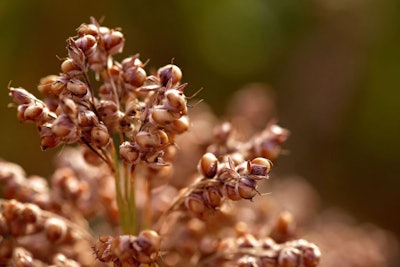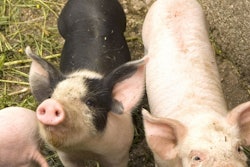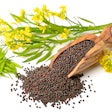
When well-known ingredients become scarce, alternatives become a must.
When common ingredients suddenly become unavailable or too expensive, the focus turns immediately to using alternative ingredients. These can be sourced locally at small(er) quantities, or through normal trade channels at sufficiently large quantities to last for quite a long(er) period of time.
In either case, when non-conventional ingredients are considered in feeds where only conventional ingredients, such as corn and soybean meal, were used in the past, the following guidelines may ease the transition or prevent unforeseen problems.
1. Alternative ingredients must be characterized thoroughly
An ingredient name can encompass too much variability to be of much use when it comes to lesser-known feedstuffs.
The genetics of plants for the most common feed ingredients have become rather standardized throughout the world, so corn is more or less corn – even though it might differ a point up or down in protein percentage. The same applies to soybean meal, although processing always enters an extra degree of variability.
We could not be as confident, however, for other ingredients such as sorghum or rapeseed meal (to mention two not so exotic) or millet and guar meal (these are indeed exotic). Apart from the usual laboratory analyses for nutrients, the plant variety (if known) will help nutritionists estimate the level of anti-nutritional factors, which will limit the inclusion rate of these ingredients. If such information is unavailable, then at least the origin can provide some clues, and the same can be argued for a physical inspection of the material in question.
The more information we have about the origin, quality, composition, processing, etc. of alternative feed ingredients, the less we risk affecting animal health, welfare, performance and profitability.
2. New feed formulas must be rebalanced
There is no such thing as a 1:1 substitution for any ingredient. In today’s world, feed formulation is done in a matter of seconds or minutes with a computer formulation software. A nutritionist will rebalance the feed, after deciding on the upper maximum inclusion level, and include any specific additives to alleviate potential problems.
For example, extra iron is added when high-gossypol cottonseed is used in feeds for monogastrics. Such examples abound, and this is why an experienced nutritionist with a background in using alternative ingredients is essential to undertake this task.
3. Introduce alternative ingredients gradually
For animals previously consuming conventional feeds, it is often advised not to introduce alternative ingredients at their maximum potential inclusion level.
For example, if 20% of sugar beet pulp can be fed in a class of animals, then it would be better to introduce this ingredient at 10%, then go to 15%, and finally reach 20%. This allows time for the animal’s digestive tract to make any necessary adjustment to the new ingredient, and time for the nutritionist to re-evaluate the maximum inclusion rate, especially if the raw material has not been characterized sufficiently.
4. Reserve alternative ingredients for less sensitive animals
This is a general recommendation, but it requires even more attention to details because it implies higher and more abrupt steps in the inclusion levels used for such feeds.
For example, using the above example, diets for less sensitive animals could be introduced at 15% beet pulp before entering the next phase at 20%, and so on. Sensitive animals such as the very young and those in the peak of productivity – and those suffering from gastrointestinal or other diseases – are better off continuing with the conventional feeds. All others can be then offered diets with increasing levels of alternative ingredients, always assuming there are enough of the common ingredients to spare them for the more sensitive classes of animals. Again, when offering alternative ingredients abruptly and at high levels to any animal, these should be monitored even more closely for adverse reactions to anti-nutritional factors.
5. Combining alternative ingredients in the same feed
We often have the opportunity or need to add more than one alternative ingredient in the same feed. The general idea is that, in such cases, we should avoid exercising the full maximum limits of inclusion rates in all alternative ingredients. As each one brings different anti-nutritional factors and perhaps even other challenges, it is best to start by being conservative and progress to higher levels, always monitoring animals for adverse reactions.
6. Constantly monitoring and re-evaluating
Alternative ingredients often come in small batches, and traders may source them from completely disparate sources. With each new load, we must exercise equal care, at least in the characterization of the raw material. This diligence will ensure we avoid disappointments and failure at the animal level that will translate to financial loss.
There is no such thing as an 100% safe raw material. This means, when we are faced with new opportunities or needs, we are also faced with increased challenges. The solution is diligence in knowing the material as intimately as possible, and monitoring animal health and performance for adverse effects.















